About Woodlands
Meet the Animals
Conservation Tips
Puzzles
Further Info
Many people think of mistletoes as being the scourge of woodland trees and fail to realise that, although they are parasites, they are also important habitat for many animals. The dense foliage of mistletoes provides good nesting sites for birds such as Noisy Friarbirds and Leaden Flycatchers. Mistletoe leaves are important food for mammals such as Common Ringtail Possums and the abundant nectar, fruit and seeds produced by mistletoes are eaten by many species. Indeed, the Painted Honeyeater and Mistletoebird are examples of species that depend almost entirely on mistletoe as a food resource.

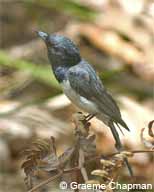
Leaden Flycatcher Myiagra rubecula
The leaden flycatcher feeds on insects and other invertebrates such as dragonflies, termites, beetles, flies and wasps. It constructs its cup-shaped nests from pieces of bark, held together by spider web. It is a highly active bird which darts in and out of the midstorey to feed. Usually solitary, it is sometimes observed in pairs.
Key habitat needs: The leaden flycatcher occurs in dry forests and woodland habitats throughout northern and eastern Australia.
Did you know? Flycatchers are able to catch insects whilst in flight due, in part, to bristles around its bills which help the bird sense flying insects.
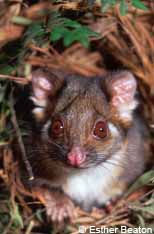
Common Ringtail Possum Pseudocheirus peregrinus
The common ringtail possum is common and widespread throughout Tasmania, Victoria, NSW and Queensland. It inhabits tea-tree swamps, open woodlands, dry and wet forests, rainforest and even suburban gardens and parks. Although common, the ringtail is declining in some habitats such as box-ironbark forests in Victoria. This is due to logging, mining, land clearing and the introduction of the red fox and feral cat.
Key habitat needs: Common ringtail possums require large, old trees with hollows for sheltering and nesting as well as understorey vegetation such as tea-tree, kunzea and wattle for foraging.
Did you know? The common ringtail possum produces two types of poo, one of which is edible. When the possum is resting during the day they produce soft faeces which is rich in nutrients. Eating this poo allows the possum to survive on a low-nutrient eucalypt leaves.
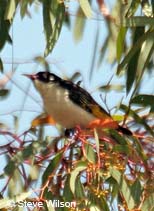
Painted HoneyeaterGrantiella picta
The nomadic painted honeyeater is found on the western slopes of the Great Dividing Range in NSW, Victoria and southern Queensland, usually roaming northwards during winter. It is rare throughout these areas and is listed as a vulnerable species in NSW and Victoria.
Key habitat needs: Mistletoe is a vital food source for these birds, especially the Amyema species of mistletoe. It is also known to eat nectar and invertebrates.
Did you know? Male Painted Honeyeaters try to impress females by flying high in the sky and then descending rapidly at the same time as singing - these are known as courtship display flights.
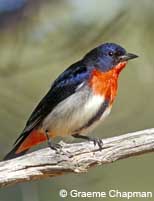
Mistletoebird Dicaeum hirundinaceum
This bird, Australia's only type of flowerpecker, is common throughout its range of mainland Australia, Papua New Guinea and in some parts of Indonesia. It is nomadic, traveling where mistletoe is growing.
Key habitat needs: The Mistletoebird relies for the most part on mistletoe berries for its diet, but also eats insects, spiders and nectar. It has a specialised digestive tract which allows it exist almost wholly on mistletoe berries. Once the berries pass through the bird, they are excreted as a sticky substance and then wiped onto the branch. If the branch is living, a germinating parasite will give rise to a new clump of mistletoe.
Did you know? The female mistletoe bird builds the nest and looks after the eggs entirely by herself. Once the eggs hatch, the male will help feed the chicks.
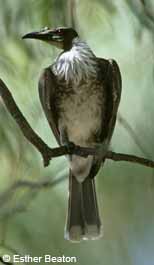
Noisy Friarbird Philemon corniculatus
The noisy friarbird is commonly found in the eastern states of Australia as well as Papua New Guinea. It is so-called because it often squabbles over food with others. As well as fighting among themselves, they can also be aggressive towards other birds within their feeding territory.
Key habitat needs: The noisy friarbird is a type of honeyeater and feeds on nectar, insects, flowers and seeds. It inhabits a range of landscape types including woodlands, dry forests, scrublands and heathlands.
Did you know? The noisy friarbird has a completely bald head, which is why its nickname is "leatherhead".

